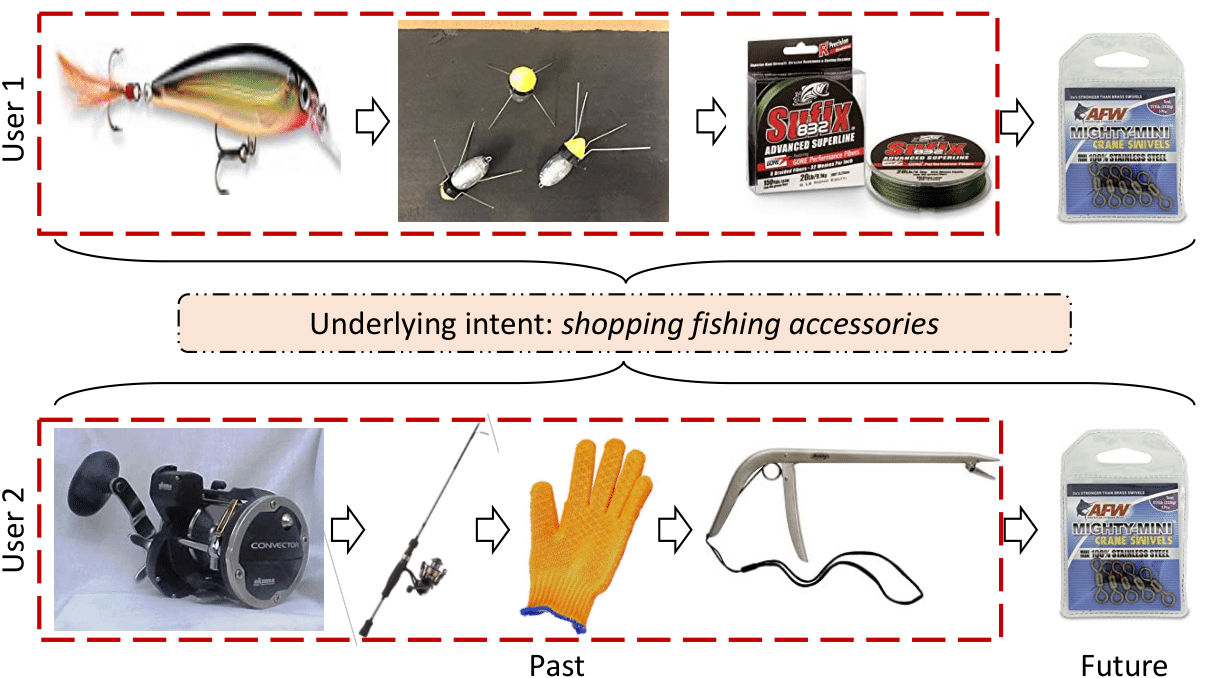Intent Contrastive Learning for Sequential Recommendation
Users' interactions with items are driven by various intents (e.g., preparing for holiday gifts, shopping for fishing equipment, etc.).However, users' underlying intents are often unobserved/latent, making it challenging to leverage such latent intents forSequentialrecommendation(SR). To investigate the benefits of latent intents and leverage them effectively for recommendation, we proposeIntentContrastiveLearning(ICL), a general learning paradigm that leverages a latent intent variable into SR. The core idea is to learn users' intent distribution functions from unlabeled user behavior sequences and optimize SR models with contrastive self-supervised learning (SSL) by considering the learned intents to improve recommendation. Specifically, we introduce a latent variable to represent users' intents and learn the distribution function of the latent variable via clustering. We propose to leverage the learned intents into SR models via contrastive SSL, which maximizes the agreement between a view of sequence and its corresponding intent. The training is alternated between intent representation learning and the SR model optimization steps within the generalized expectation-maximization (EM) framework. Fusing user intent information into SR also improves model robustness. Experiments conducted on four real-world datasets demonstrate the superiority of the proposed learning paradigm, which improves performance, and robustness against data sparsity and noisy interaction issues.
PDF Abstract




